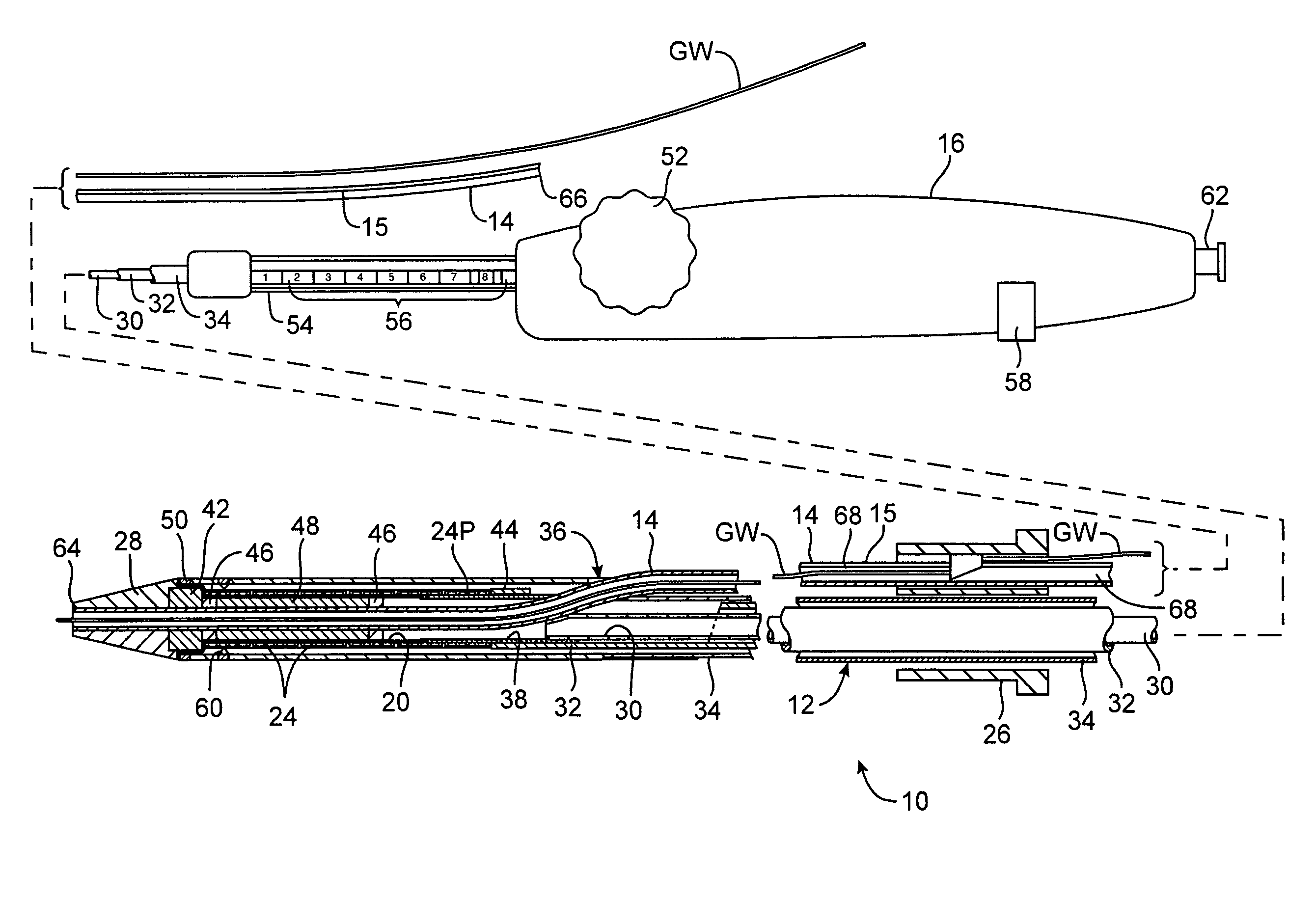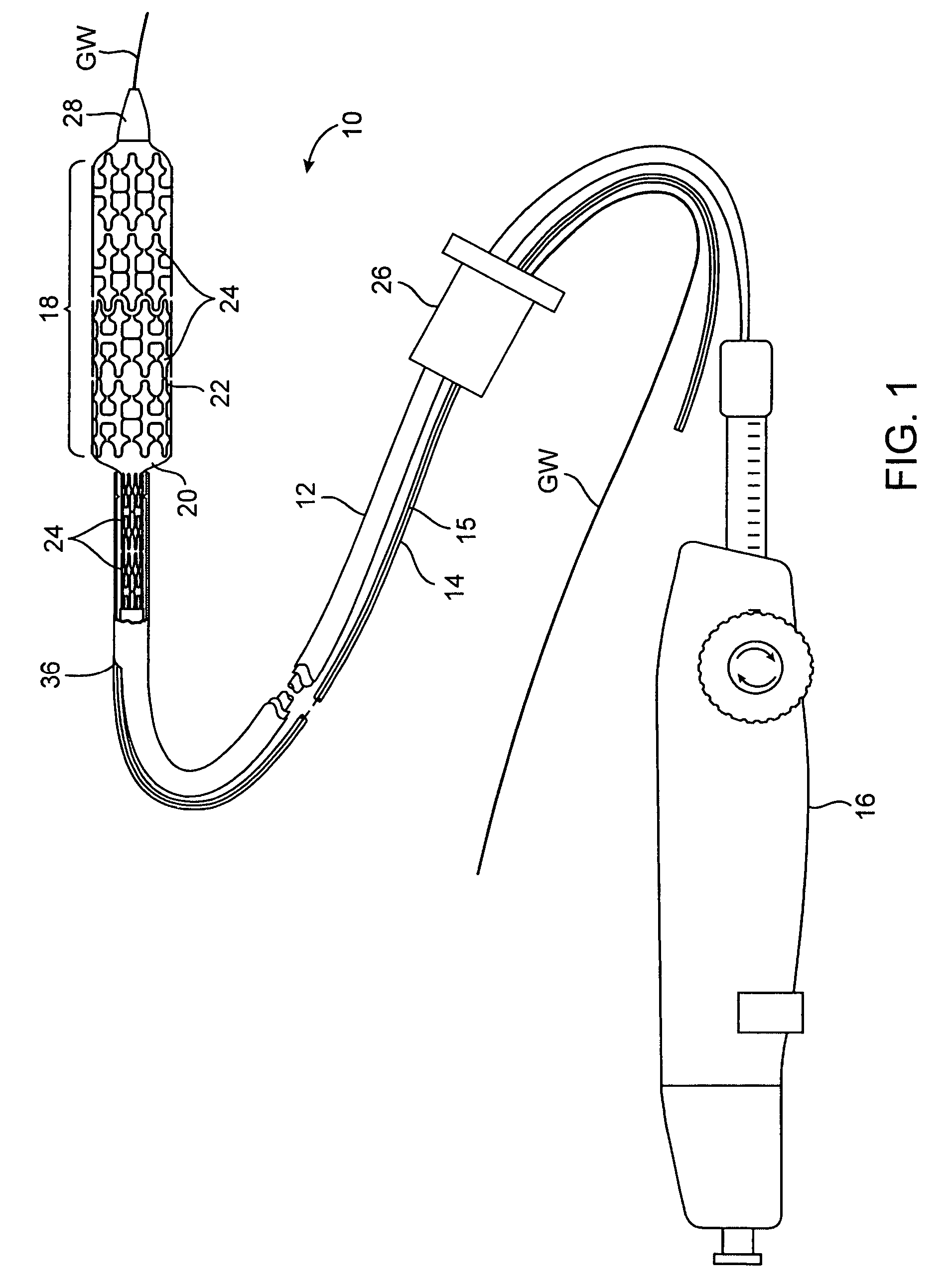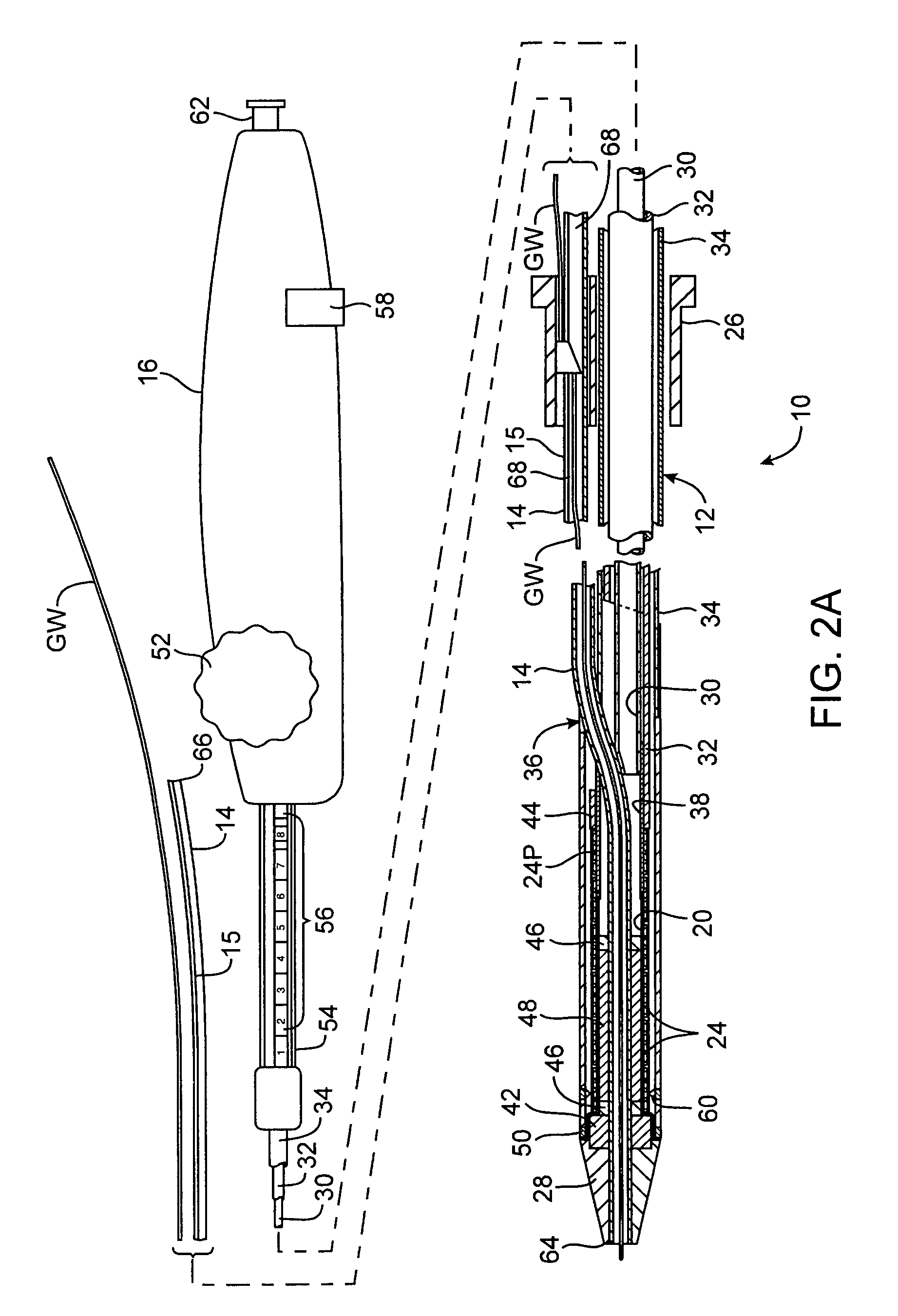Rapid exchange interventional devices and methods
a technology of interventional devices and catheters, applied in the field of rapid exchange interventional devices and methods, can solve the problems of destroying heart muscle tissue, difficult and time-consuming, and long guidewires
- Summary
- Abstract
- Description
- Claims
- Application Information
AI Technical Summary
Benefits of technology
Problems solved by technology
Method used
Image
Examples
first embodiment
[0037]Referring to FIG. 1, an interventional device according to the invention will be described. In this embodiment, the interventional device is a stent delivery catheter 10 having a catheter body 12, a guidewire tube 14 with a longitudinal slit 15, a handle 16, and an interventional element 18. Interventional element 18 comprises an expandable balloon 20 coupled to catheter body 12, and one or more stents 22 positioned over balloon 20 for expansion therewith. In a preferred embodiment, each stent 22 comprises a plurality of separate or separable stent segments 24, some of which are shown expanded on balloon 20 while others are retained within catheter body 12. Catheter body 12 and guidewire tube 14 extend through a collar 26 and are slidable relative thereto. A guidewire GW extends slidably through guidewire tube 14 between a nosecone 28 at the distal end of catheter body 12 and collar 26.
[0038]Delivery catheter 10 has dimensions suitable for use in the anatomical region to be tr...
second embodiment
[0046]a wire guide 80A in collar 26 is illustrated in FIGS. 4A-4C. Wire guide 80A includes a generally cylindrical bottom tube 90 configured to slide within guidewire lumen 68. Bottom tube 90 may be round, oval, elliptical, disk-shaped or other suitable shape in cross-section, and may have a pointed, conical, bullet-shaped, or rounded leading edge to assist in tracking through guidewire lumen 68. Bottom tube 90 is fixed to a base 92 attached to the wall 94 of collar 26. Base 92 is configured to extend through slit 15 in guidewire tube 14. The leading edge 96 of base 92 may be tapered, peaked, rounded or have other suitable shape to assist in sliding through and spreading slit 15. A passage 98 extends from a distal opening 100 in bottom tube 90 to a proximal opening 102 on the proximal side of base 92. Distal opening is aligned with guidewire lumen 68, while proximal opening 102 is radially offset therefrom so that guidewire GW is guided from being within guidewire lumen 68 distally ...
PUM
 Login to View More
Login to View More Abstract
Description
Claims
Application Information
 Login to View More
Login to View More - R&D
- Intellectual Property
- Life Sciences
- Materials
- Tech Scout
- Unparalleled Data Quality
- Higher Quality Content
- 60% Fewer Hallucinations
Browse by: Latest US Patents, China's latest patents, Technical Efficacy Thesaurus, Application Domain, Technology Topic, Popular Technical Reports.
© 2025 PatSnap. All rights reserved.Legal|Privacy policy|Modern Slavery Act Transparency Statement|Sitemap|About US| Contact US: help@patsnap.com



